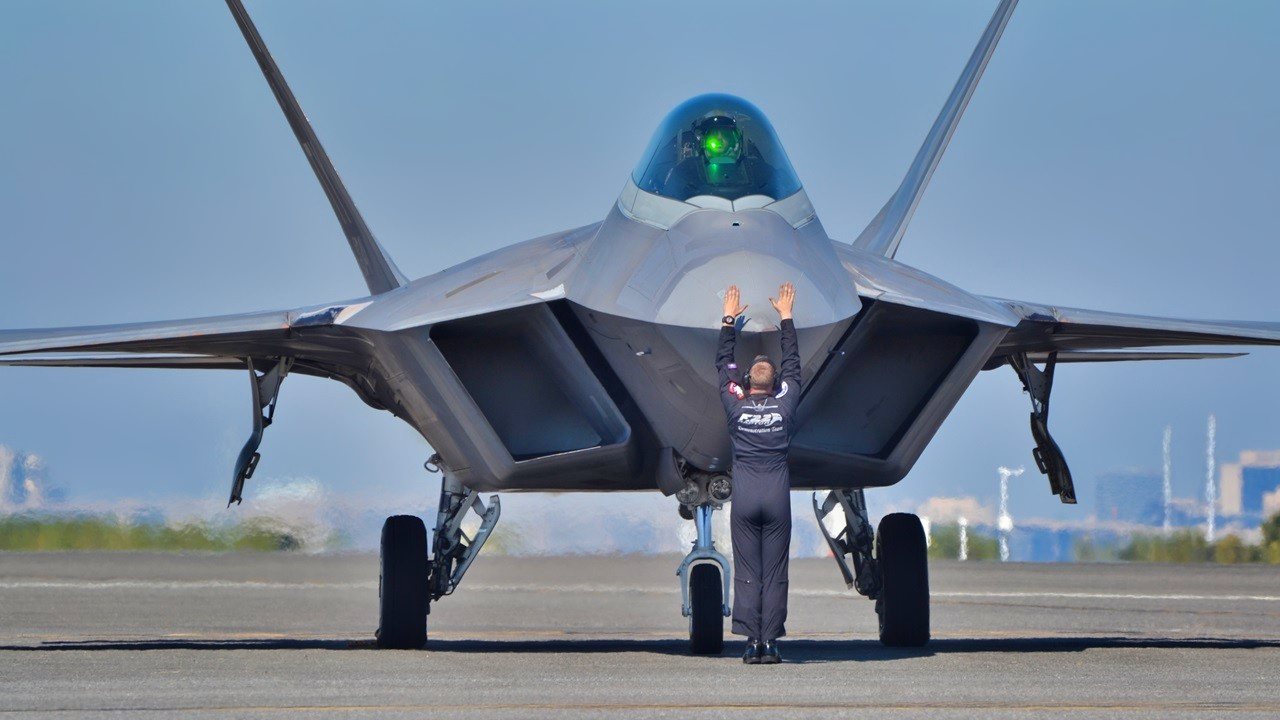F-22 Raptor: How Fast Can This 5th Generation Stealth Fighter Fly?
The F-22 Raptor has an impressive capability for stealth flight, yet, it isn't entirely "invisible" to radar screens.
How fast can the F-22 Raptor fly? Just how fast is the F-22 Raptor stealth fighter, the plane that took out China's Spy Balloon?
Widely regarded as the most capable air superiority fighter in service anywhere in the world, the Lockheed Martin F-22 was developed to be capable of both air-to-air and air-to-ground missions.
It has been designed to combine stealth, performance, agility, and integrated avionics in a single and highly capable airframe.
F-22 Can Fly Fast
Powered by two Pratt & Whitney F119 engines, the Raptor is quite the warbird – capable of accelerating to cruise speeds of about Mach 1.8 without using afterburners.
According to the United States Air Force, which remains the sole operator of the F-22, its engines produce more thrust than any current fighter engine.
Its agility allows it to make very tight turns, and exploit post-stall maneuvering capabilities, flying at sustained angles of attack of more than 60 degrees while retaining some roll control.
F-22 Raptor: Able to Attack Surface Targets
Though designed for air superiority/air dominance roles as part of the Air Force's Advanced Tactical Fighter (ATF) program, the F-22 has a significant capability to attack surface targets. In the air-to-ground configuration, the aircraft can carry two 1,000-pound GBU-32 Joint Direct Attack Munitions internally and utilizes its onboard avionics for navigation and weapons delivery support.
It also has four hardpoints on the wings, all of which can carry around 5,000 pounds, and are also capable of holding external fuel tanks or AIM-120A AMRAAM.
The First in Stealth
Ordnance is carried in the F-22's three internal weapons bays, which only open up at the very last second as the Raptor essentially "uncloaks" when it is ready to strike.
The aircraft incorporates numerous lessons learned from previous U.S. combat aircraft. Its angular shape is similar to the Lockheed F-117 Nighthawk, while many of the surface shapes are curves with changing radii. Those curves scatter radar beams in all directions instead of back to the radar source. The Raptor's wings and horizontal stabilizer align perfectly, reducing the overall radar signature.
In addition, there are no right angles on the exterior of the design – instead, there are "sawtooth edges" on cockpit edges and landing gear doors, while other openings also break up radar. Moreover, the edges of the main wing and rear wing line up exactly, making them appear much smaller on radar.
The aircraft's special coating also absorbs radar waves, while the cockpit was even designed to minimize the radar profile of the pilot's helmet!

The horizontal fins at the rear of the aircraft not only make the plane more maneuverable but also act as a shield for the engine exhaust heat. Shielding the heat from the F-22's engines further keeps its thermal or infrared signature to a minimum.
The F-22 has an impressive capability for stealth flight, yet, it isn't entirely "invisible" to radar screens.
However, it is so stealthy that it appears to be the size of a bumblebee when detected by radar, even though it is more than 62 feet long and has a wingspan of 44.5 feet.

All of these advanced capabilities allow the F-22 to fly into defended areas that would otherwise be inaccessible to American fighters, and make the Raptor a nearly unstopped warbird.
About the Author
Peter Suciu is a Michigan-based writer who has contributed to more than four dozen magazines, newspapers, and websites with over 3,000 published pieces over a twenty-year career in journalism. He regularly writes about military hardware, firearms history, cybersecurity, and international affairs. Peter is also a Contributing Writer for Forbes. You can follow him on Twitter: @PeterSuciu.


